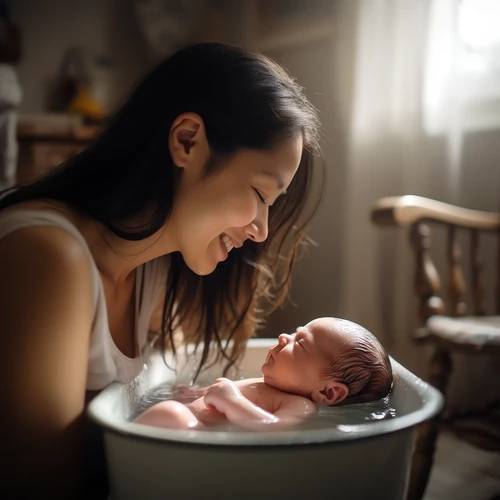Newborn bathing is one of the first rituals parents learn to master. While the idea of a small baby in water can feel intimidating, a calm, systematic approach makes it safe and enjoyable for both infant and caregiver.
Start by preparing the environment—clear a flat surface, keep it warm, and place a soft towel, fresh diaper, and any toiletries nearby. The water temperature should be between 36 °C and 38 °C (97 °F to 100 °F). A quick test with your wrist or the inside of your elbow confirms it’s just right; too hot can burn, too cold will shiver the baby.
Use a shallow baby tub or a tub attachment designed for infants. Hold the newborn gently but securely with one hand supporting the head and neck, and the other steadier beneath the back. A steady, slow motion keeps the baby calm. Avoid sudden rocking or jerking movements.
When washing, choose a mild, fragrance‑free baby soap or, better, a simple water rinse. Apply a small amount of soap with your thumb or a soft washcloth, working from the back through the neck, face, and chest. Avoid the eyes; use a damp washcloth or baby wipes for the face.
After rinsing, gently lift the baby out and pat dry with a hand towel—do not rub. Wrap them immediately in a warm blanket, placing the blanket over the arms so the body stays covered and warm.
Remember these key safety cues:
• Never leave the baby unattended in the bath.
• Use a baby-safe bath ring or a nonslip mat.
• Keep a small, non‑sketchy object—like a rolled towel—in the tub for the baby's sensory play.
• Maintain consistent bath times, generally before naps or bedtime, ensuring the bath does not disrupt sleep cycles.
With these simple steps, newborn bathing becomes a soothing bonding ritual, promoting both the baby’s hygiene and emotional connection.


